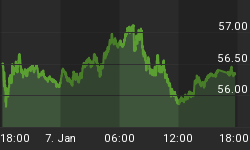While markets' attention is placed on the latest rumour from German tabloids and the habitual Greek denials, let's focus on the other USD pair.
When USDJPY hit the 125.86 high earlier this month, it was its highest level since June 2002. The 65% climb from the February 2012 lows of 76.03 lasted took 40 months to occur, matching the duration of the 85% rise from April 1995 low to this month's high.
The factors behind the latest rise and those prevailing in the late 1990s are similar; i) rapid declines in Japanese interest rates; ii) deteriorating Japanese growth; iii) relative improvement in US economy and iv) expectations of higher US rates ahead. The 45% increase in the US-Japan 10-year yield spread to 1.98% earlier this month was triggered by improved US jobs figures and recurring weakness in Japan's business survey and GDP data.
But the US-Japan 10-year spread failed to break its 100-week moving average on a combination of US data disappointment and broadening selling in global equities, feeding into the yen's safe haven role, highlighted by its low yields.
The latest USDJPY cycle may well take an additional one or two months before fading and lead to a subsequent break below 116.00 as the Bank of Japan policy board faces growing divisions with regards to expanding monthly asset purchases, and the Federal Reserve comes to terms with the 'market' realities of raising rates (Treasury market liquidity, emerging markets suffering more yield gains) albeit as small as 25 bps.

















